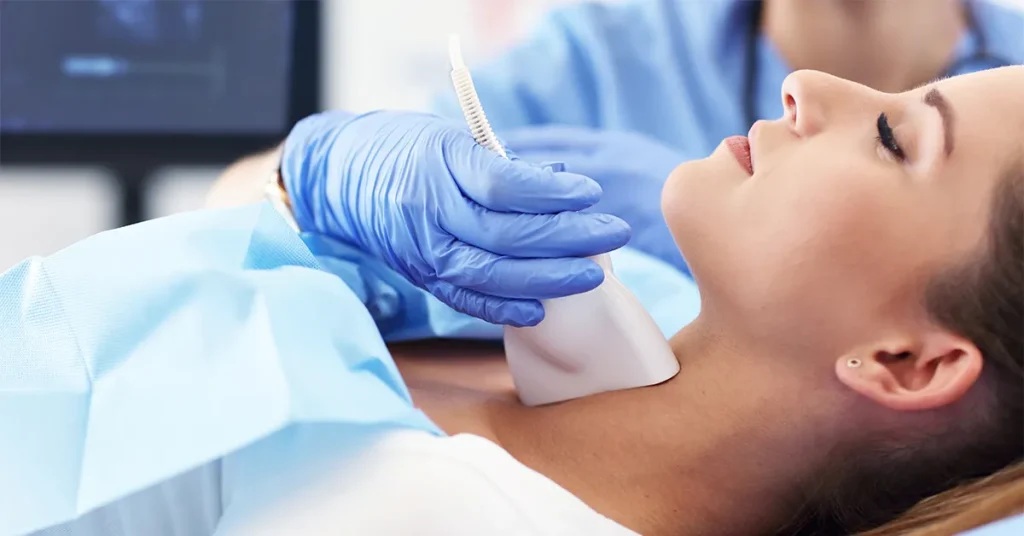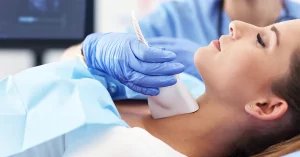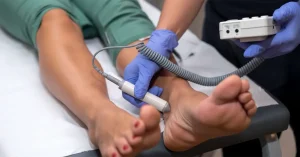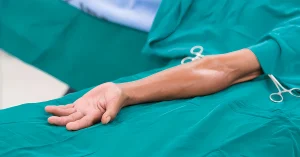What Are Thyroid Nodules?
The thyroid gland may undergo different structural changes, the most common being the appearance of nodules. Thyroid nodules are well-defined formations within the thyroid tissue that differ from the surrounding parenchyma. They can sometimes be detected by physical examination, but most are now discovered through ultrasound.
Studies indicate that 4% to 7% of the population has thyroid nodules, with the incidence increasing with age and being considerably higher in women. Many nodules are smaller than 1 cm, making them non-palpable, which highlights the importance of routine thyroid ultrasound for early detection.
Although fewer than 10% of nodules are malignant, identifying suspicious nodules early is crucial. For this reason, nodules with concerning ultrasound features must be carefully investigated, often with an ultrasound-guided fine needle aspiration biopsy (FNAB).
What Is Fine Needle Aspiration?
Ultrasound-guided fine needle aspiration biopsy (FNAB) is a cornerstone diagnostic procedure for thyroid nodules. It is minimally invasive, quick, safe, and provides cytological information essential for patient management. The method was introduced in the 1970s in Denmark and has since become a standard investigation in endocrinology worldwide.
FNAB enables early detection of potentially malignant lesions, even in small nodules measuring just 0.8–1 cm, through high-precision ultrasound guidance. The procedure is usually performed in an outpatient setting, does not require hospitalization, and is associated with very few complications while being well tolerated by patients.
Beyond its role in distinguishing benign from malignant nodules, FNAB guides further management decisions, ranging from periodic ultrasound surveillance to surgical intervention. Multidisciplinary collaboration between endocrinologists and thyroid surgeons ensures that each patient benefits from a personalized diagnostic and treatment pathway. Today, FNAB is recognized as a standard of care in modern thyroid evaluation.
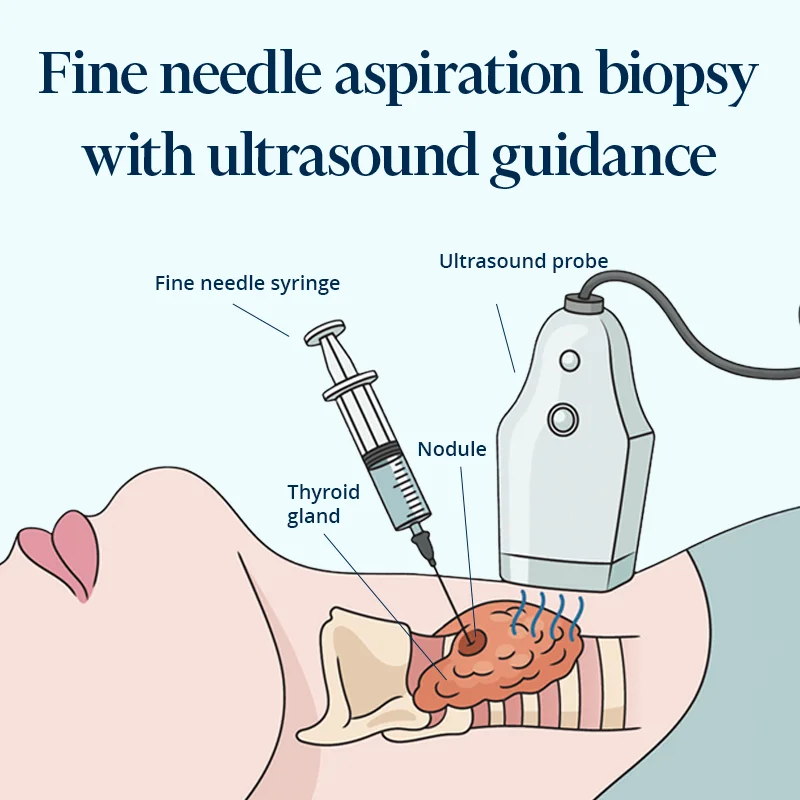
When Is This Procedure Necessary?
Ultrasound-guided fine needle aspiration of the thyroid is performed only upon the recommendation of an endocrinologist, following a complete assessment that includes physical examination, ultrasound imaging, and laboratory tests. The test plays a central role in differentiating benign nodules from malignant ones, ensuring accurate diagnosis and guiding therapy.
By collecting a small tissue sample, FNAB provides essential information without the need for hospitalization, making it a fast and effective diagnostic tool.
Fine needle aspiration is generally indicated for nodules larger than or equal to 10 mm that show suspicious ultrasound features, such as:
- Hypoechoic or solitary nodules;
- Solid nodules (a cystic component does not exclude malignancy);
- Irregular or poorly defined margins;
- Increased intranodular vascularization;
- Presence of microcalcifications;
- Abnormal cervical lymph nodes.
At VenArt Clinic, patients benefit from high-precision FNAB performed by experienced specialists in endocrinology and endocrine surgery. Using advanced ultrasound equipment, even very small nodules can be detected and evaluated. The procedure is painless, outpatient-based, and contributes to creating an individualized treatment plan.
How Is Fine Needle Aspiration Performed?
Fine needle aspiration of the thyroid is performed by introducing a very thin needle into the thyroid gland under ultrasound guidance. The needle collects a small sample of cells or fluid from the targeted area, usually a suspicious nodule or cyst.
The collected sample is sent to a pathology laboratory for microscopic evaluation by a cytologist or pathologist, who can determine whether the cells are benign or malignant.
The procedure lasts about 20–30 minutes in total and is well tolerated. Before the biopsy, the patient receives detailed information about the steps involved and signs an informed consent form. Patients also have the opportunity to ask questions and clarify concerns with the physician before the procedure begins.
Frequently Asked Questions
What Are The Risks Associated With Thyroid Puncture?
When performed under real-time ultrasound guidance, FNAB is considered a very safe procedure. The visualization of surrounding structures helps minimize complications such as bleeding or damage to nearby tissues. Studies confirm that FNAB does not spread malignant cells. Rarely, minor side effects such as mild pain or a small hematoma at the puncture site may occur, but these usually resolve quickly.
Is The Procedure Painful?
Because the needle used is extremely fine, FNAB is virtually painless or only slightly uncomfortable. Anesthesia is generally not required.
What Happens After The Procedure?
Patients can return to their daily activities immediately after the biopsy. A small dressing applied at the puncture site can usually be removed within 15–20 minutes.

